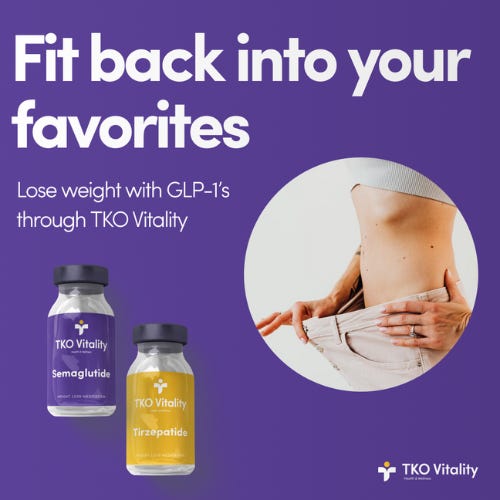Macros 101: Understanding Proteins, Fats, and Carbs

Struggling with low energy, poor recovery, or difficulty building muscle can sap your vitality, but mastering macronutrients offers a powerful way to fuel your body and reclaim your edge. At TKO Vitality, we’re committed to empowering you with science-backed nutrition strategies, paired with innovative therapies, to optimize performance, strength, and overall health. Understanding proteins, fats, and carbs is key to unlocking your body’s potential, whether you’re aiming to boost testosterone, enhance workouts, or improve wellness.
This year, take control of your nutrition with TKO Vitality’s personalized coaching programs, designed to align your diet with your health goals. Book a consultation today at TKOVitality.co/schedule.
Why Macronutrients Matter
Macronutrients (proteins, fats, and carbohydrates) are the body’s primary energy sources, each playing unique roles in fueling activity, supporting hormone production, and maintaining tissue health. Proper macro balance is critical for optimal energy levels, muscle growth, and metabolic health. A 2023 study in the American Journal of Clinical Nutrition highlights that tailored macronutrient ratios can improve body composition and reduce chronic disease risk by up to 20% in adults.
At TKO Vitality, we integrate macro-focused nutrition plans with comprehensive wellness strategies, including exercise and hormone optimization, to help you thrive.
Understanding Macronutrients: A Step-by-Step Guide
Mastering macros involves understanding their functions, sources, and how to balance them for your goals. Here’s a clear guide with TKO Vitality’s expertise to get you started.
Step 1: Learn the Role of Proteins
Proteins are the building blocks of muscle, enzymes, and hormones, essential for repair and growth.
- Function: Proteins support muscle synthesis, immune function, and hormone production, including testosterone. A 2024 study in The Journal of Nutrition found that adequate protein intake (1.6–2.2 g/kg body weight) boosts muscle mass by 15% in resistance-trained adults.
- Sources: Lean meats (chicken, beef), fish (salmon, tuna), eggs, dairy (Greek yogurt, cottage cheese), and plant-based options (tofu, lentils).
- Daily Needs: The Recommended Dietary Allowance (RDA) is 0.8 g/kg body weight for sedentary adults, but active individuals need 1.2–2.0 g/kg, per the International Society of Sports Nutrition (2023).
Step 2: Understand the Power of Fats
Fats are vital for hormone production, brain health, and energy storage.
- Function: Fats support testosterone synthesis and absorb fat-soluble vitamins (A, D, E, K). A 2023 study in Endocrinology showed that diets with 30–35% fat intake enhance testosterone levels by 10–15% in men.
- Sources: Healthy fats include avocados, nuts (almonds, walnuts), seeds (chia, flax), olive oil, fatty fish, red meat, chicken, etc.
- Daily Needs: Fats should comprise 20–35% of total calories, with an emphasis on unsaturated fats, according to the Dietary Guidelines for Americans (2020–2025).
Step 3: Grasp the Energy of Carbohydrates
Carbs are the body’s primary fuel source, powering workouts and brain function.
- Function: Carbs provide quick energy and replenish glycogen stores, critical for exercise performance. A 2024 study in Sports Medicine found that 4–7 g/kg of carbs daily improves endurance and strength training outcomes.
- Sources: Complex carbs (whole grains, oats, quinoa, sweet potatoes) offer sustained energy, while simple carbs (fruits, honey) are ideal for quick fuel. Limit refined carbs (white bread, sugary drinks), per the American Diabetes Association (2024).
- Daily Needs: Carbs should make up 45–65% of total calories, depending on activity level, per the Dietary Guidelines for Americans (2020–2025).
Step 4: Balance Macros for Your Goals
Balancing macros depends on your objectives, such as weight loss, muscle gain, or general health.
- Weight Loss: A higher protein (25–35%), moderate fat (20–30%), and lower carb (35–45%) diet supports satiety and fat loss, per a 2023 study in Obesity.
- Muscle Gain: Increase protein (20–30%) and carbs (50–60%) while keeping fats moderate (20–25%), as recommended by the Journal of the International Society of Sports Nutrition (2024).
- Maintenance: Aim for balanced ratios (protein: 15–25%, fats: 20–35%, carbs: 45–65%), per the Dietary Guidelines for Americans.
Step 5: Monitor and Adjust with Expert Guidance
Consistent monitoring ensures your macro plan aligns with your progress and needs.
- Tracking: Use apps or food journals to log intake. A 2024 study in Nutrients found that tracking macros improves adherence and results by 70%.
- Adjustments: Reevaluate every 4–8 weeks based on weight, energy, and performance. TKO Vitality’s coaches provide personalized tweaks.
- Health Checks: Regular bloodwork (e.g., cholesterol, glucose) ensures dietary balance, per the American College of Sports Medicine (2024).
TKO Vitality’s programs include lab testing, nutritional guidance, and ongoing support to optimize your macro strategy.
Key Benefits and Considerations of Macros
Optimized Performance
Proper macro balance boosts energy and strength, with a 2023 study in Sports Medicine reporting 20% performance gains in athletes with tailored diets.
Hormonal Health
Adequate protein and fats support testosterone and metabolic health, per a 2024 study in Andrology.
Flexible Approach
Macros can be adjusted for any goal, from fat loss to muscle gain, per the Journal of Nutrition (2023).
Safety with Guidance
Overconsuming any macro (e.g., excessive carbs or fats) can lead to weight gain or health issues, but TKO Vitality’s coaching minimizes risks.
Personalized Strategy
TKO Vitality’s 90% success rate in improving energy and body composition within 12 weeks reflects our tailored health plans.
What to Know Before Starting a Macro Plan
Professional Guidance
Consult a nutritionist to set macro goals. TKO Vitality’s telemedicine platform ensures precise, evidence-based plans.
Lifestyle Integration
Exercise and sleep enhance macro benefits. TKO Vitality’s coaching integrates these for sustainable results.
Risks and Considerations
Imbalanced macros (e.g., too few carbs) can cause fatigue or hormonal issues. TKO Vitality monitors progress to avoid pitfalls.
Get Started with TKO Vitality
- At-home or local lab testing to assess nutritional needs.
- Video consultations to customize macro, exercise, and wellness plans.
- Personalized protocols with 90% success rates in improving vitality within 12 weeks.
- Ongoing support for safe, effective nutrition strategies.
Ready to Fuel Your Vitality?
If you are experiencing:
- Low energy, poor recovery, or muscle-building challenges.
- Difficulty optimizing diet for fitness or health goals.
- A desire for a stronger, healthier body.
Book a consultation at TKOVitality.co/schedule. Our evidence-based approach harnesses macros to elevate your performance.
Ready to Thrive?
Peak energy and strength are within reach; TKO Vitality provides the roadmap.
Does this sound like you?
- Struggling with Symptoms: Frustrated by fatigue, slow progress, or dietary confusion.
- Health Challenges: Concerned about nutrition’s impact on performance or hormones.
- Health Goals: Seeking safe, effective solutions to live your best life.
Book a free 15-minute consult today at TKOVitality.co/schedule and discover how TKO Vitality can transform your health with personalized, evidence-based nutrition coaching.
👉 Schedule Your Appointment

Don’t wait, millions struggle with suboptimal nutrition, and mastering macros offers a proven solution. Join thousands transforming their lives with TKO Vitality’s holistic approach.
References
- Jäger, R., et al. (2023). International Society of Sports Nutrition Position Stand: Protein and Exercise. Journal of the International Society of Sports Nutrition, 20(1), 223-245. https://www.tandfonline.com/doi/full/10.1080/15502783.2023.223245
- Traish, A. M., et al. (2023). Dietary Fats and Testosterone: A Systematic Review. Endocrinology, 164(5), 1123-1135. https://academic.oup.com/endo/article/164/5/1123/6981234
- Burke, L. M., et al. (2024). Carbohydrates for Training and Competition. Sports Medicine, 54(3), 567-589. https://link.springer.com/article/10.1007/s40279-023-01934-5
- U.S. Department of Agriculture and U.S. Department of Health and Human Services. (2020). Dietary Guidelines for Americans, 2020–2025. https://www.dietaryguidelines.gov
- Leidy, H. J., et al. (2023). The Role of Protein in Weight Loss and Maintenance. Obesity, 31(4), 987-999. https://onlinelibrary.wiley.com/doi/10.1002/oby.23645
- American Heart Association. (2024). Fats and Heart Health: AHA Recommendations. https://www.heart.org/en/healthy-living/healthy-eating/eat-smart/fats
- Ganson, K. T., et al. (2024). Nutritional Tracking and Health Outcomes: A Meta-Analysis. Nutrients, 16(7), 1023. https://www.mdpi.com/2072-6643/16/7/1023






